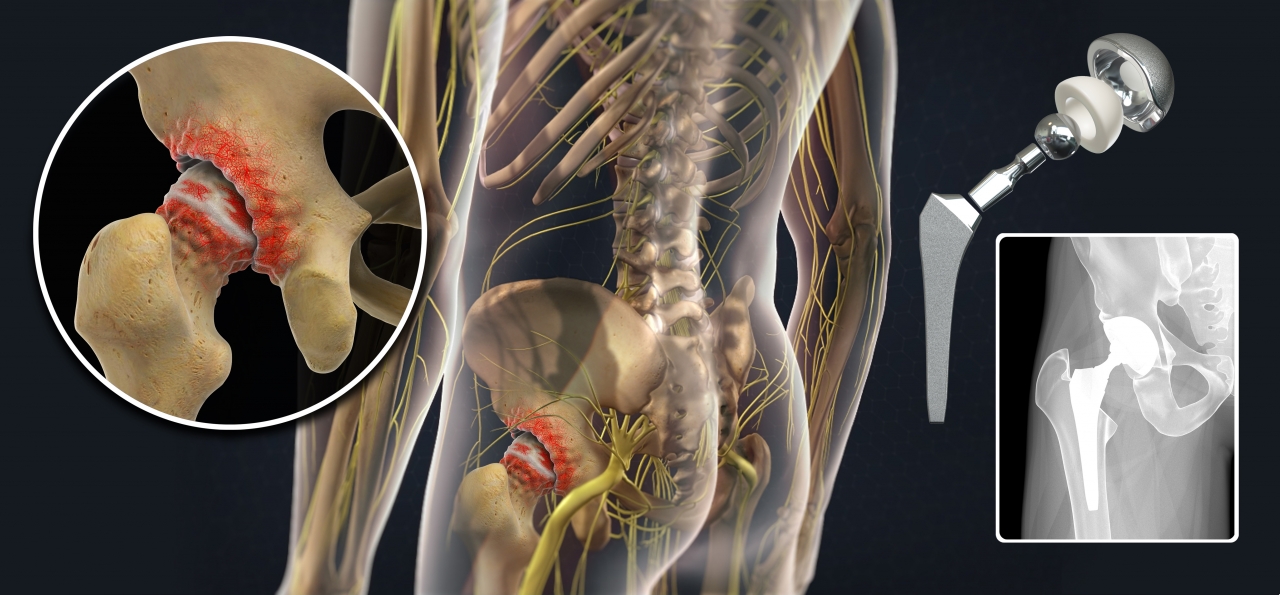Anterior Approach Benefits
The benefits of performing a hip replacement through an anterior approach include improving a patient’s quality of life, but goes a few steps further.
Click on the headings below to learn more about the different benefits of an anterior approach hip replacement surgery.
Reduced trauma and risk of hip dislocation after surgery
Obtain better leg lengths
One of the most common complaints after a hip replacement is that the leg with the replaced hip is longer. This is due to a lot of reasons. Some are due to patient’s anatomy, some are due to technical aspects of the surgery. When a patient is on their side for a posterior approach, their pelvis is not perfectly level and it is difficult to measure the patient’s legs during the operation and determine equal lengths.
The benefit of the anterior approach is that with the patient on their back during the operation we can easily make sure the pelvis and hip are level and measure our leg lengths. More importantly however, during the operation we are using small amount of live x-ray images which give us immediate pictures of the inserted hip replacement and we can better judge the length of the patient’s hip by comparing with their other side. We still may not be perfect, but we are definitely much more precise and usually within a few millimeters.
Smaller incision
No Post-Operative Restrictions
Hip precautions are recommendations that orthopedic surgeons discuss with patients before and after surgery. These only apply to patients who have a hip replacement through a posterior approach. These recommendations are to prevent patients from dislocating their new hip replacement which is one of the most common complications that can occur after a hip replacement.
The precautions start on the day of surgery when a pillow is placed between your legs for approximately the first 4-6 weeks whenever you are sitting or lying down. When you sleep, you have to sleep on your back with the pillow between your legs for the first 4-6 weeks.
In addition you are told to follow a 90-90 rule which means don’t bend your hips or knees beyond 90 degrees. You are also told not to cross your legs, turn your toes inward, or tie your shoes. You shouldn’t sit on low chairs or couches. To assist with these precautions, you are also recommended to get an elevated toilet seat so that when you sit down on the toilet, you don’t go beyond 90 degrees at the hip either when you sit or get up.
If you have your hip replaced by an anterior approach, none of these precautions apply. The risk of dislocation is almost eliminated and you don’t need that cumbersome pillow between your legs. You can sit or sleep in any comfortable position you like. You can cross your legs, tie your shoes, and you don’t need an elevated toilet seat.
Faster recovery with less pain
Rehabilitation is different because of the elimination of hip precautions, but also it is much faster. The rehabilitation is faster because the muscles are not traumatized during the approach to the hip.
Patients are able to get up and walk with the use of a walker much easier and most progress to a cane with 2 to three weeks. Patients are walking independently without the use of a cane typically by 4-5 weeks and then returning to their normal activities shortly there after. Normal activities resume at about 3 months.
This is in comparison to a posterior approach whereby patients are on walkers for almost the first 4 – 6 weeks, progress to cane for the next 3-4 weeks, then walk independently at about 10 weeks.
Q: So, why aren’t all orthopedic surgeons doing hip replacements through an anterior approach?
That is a good question with probably several answers. Most orthopedic surgeons were trained to do hip replacement surgery through a posterior approach in their residencies. Doing it that way works and has excellent results and some surgeons are reluctant to change. Drs. Janke & Naide are open to change, if they think it adds benefits to their patients.
Secondly, to learn the anterior approach means traveling to see other surgeons perform the operation, and practicing on cadavers. This takes time and money.
Thirdly, it does help to have the special table to do this operation. Not all hospitals are willing to purchase a table that costs nearly $100,000 dollars.
Lastly, it does take a little longer to perform the operation through the anterior approach, but not significantly. It has added anywhere from one hour longer, initially, to only about 15-20 minutes longer, now.


